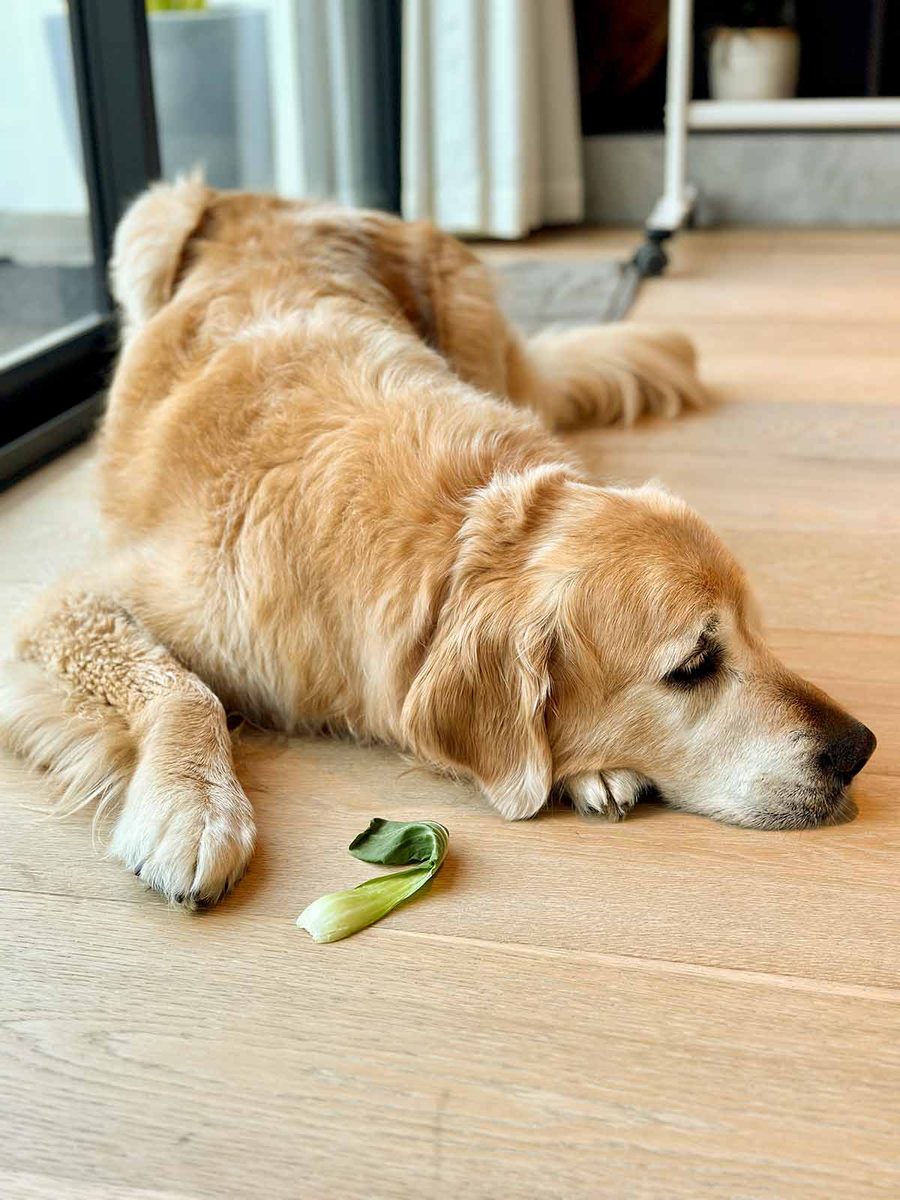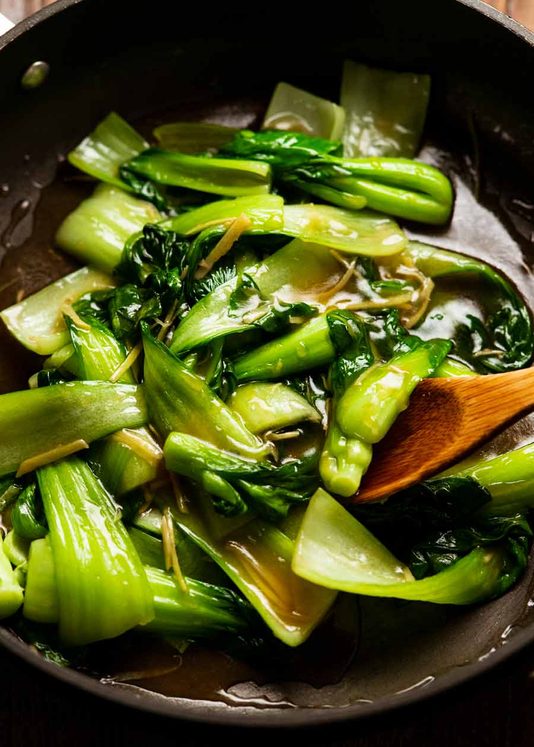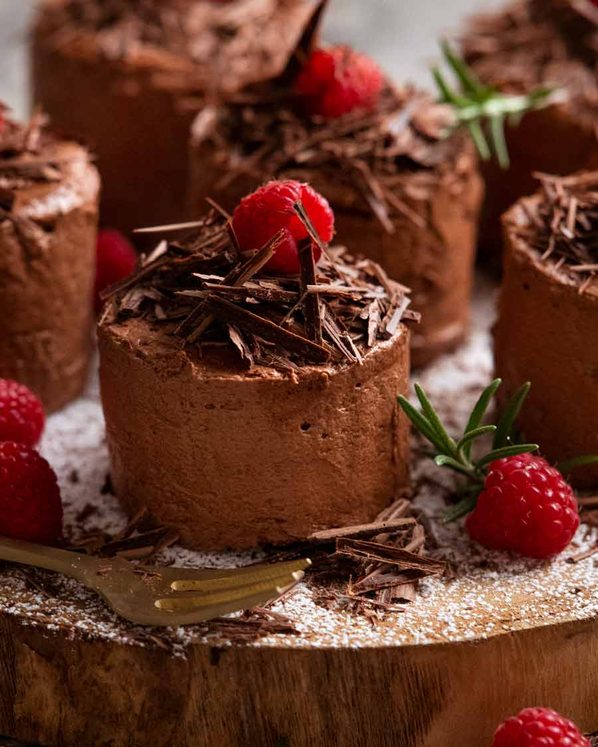My favourite way to cook bok choy is with a lovely shiny, ginger sauce. Great way to load up on leafy Asian greens quickly and easily! On the table in 5 minutes, serve over fluffy rice or over noodles in soup.
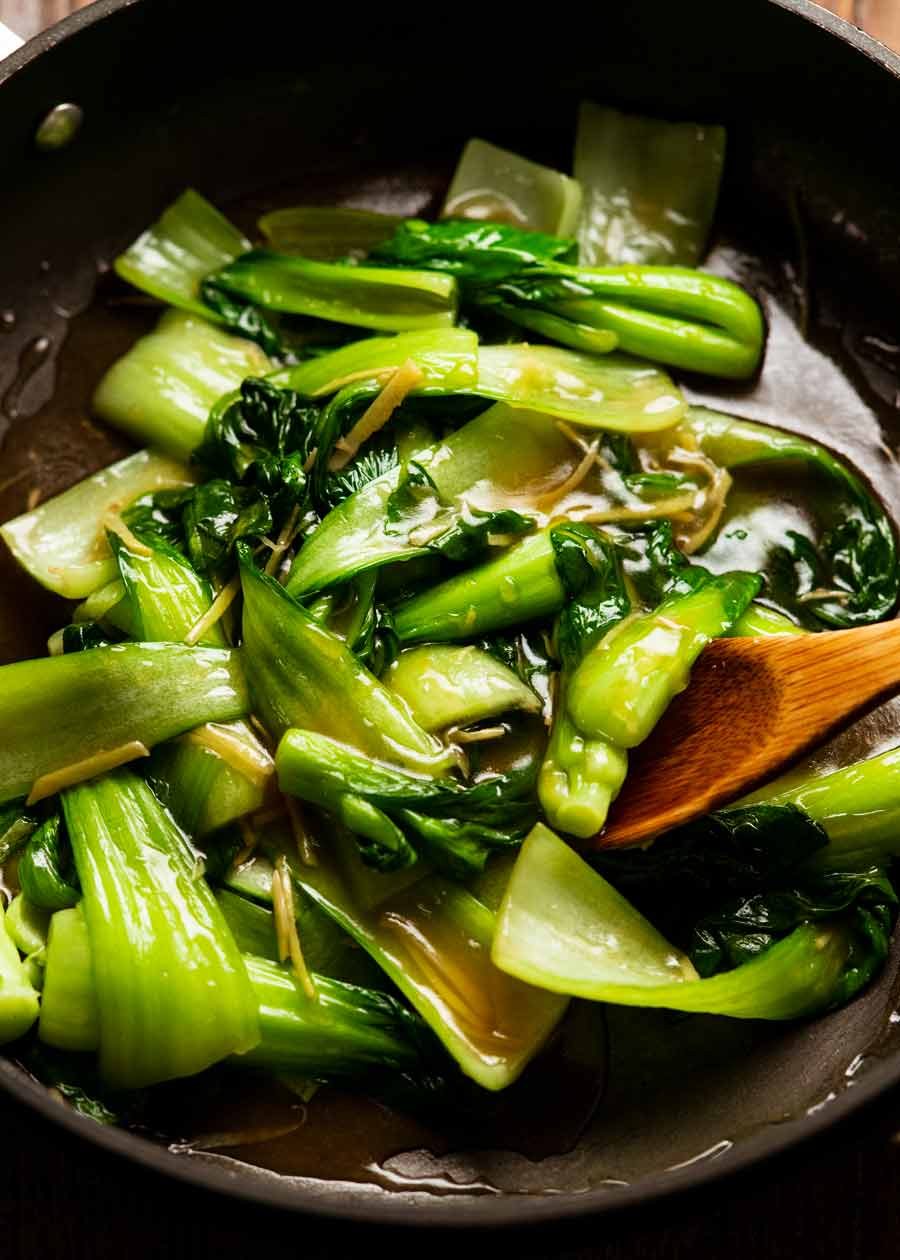
My favourite bok choy recipe
I’ve shared many stir fries using bok choy but I’ve never done one where it takes centre stage. Which is a bit of an omission on my part because today’s recipe is one that I use rather frequently in my day-to-day life. It’s just a really tasty, quick way to cook up a big load of leafy Asian greens. It’s a staple vegetable dish on the menu of everyday Chinese restaurants.
Saucy is the key! That ginger sauce will make any vegetable scoff-able. The Chinese are very clever cooks!
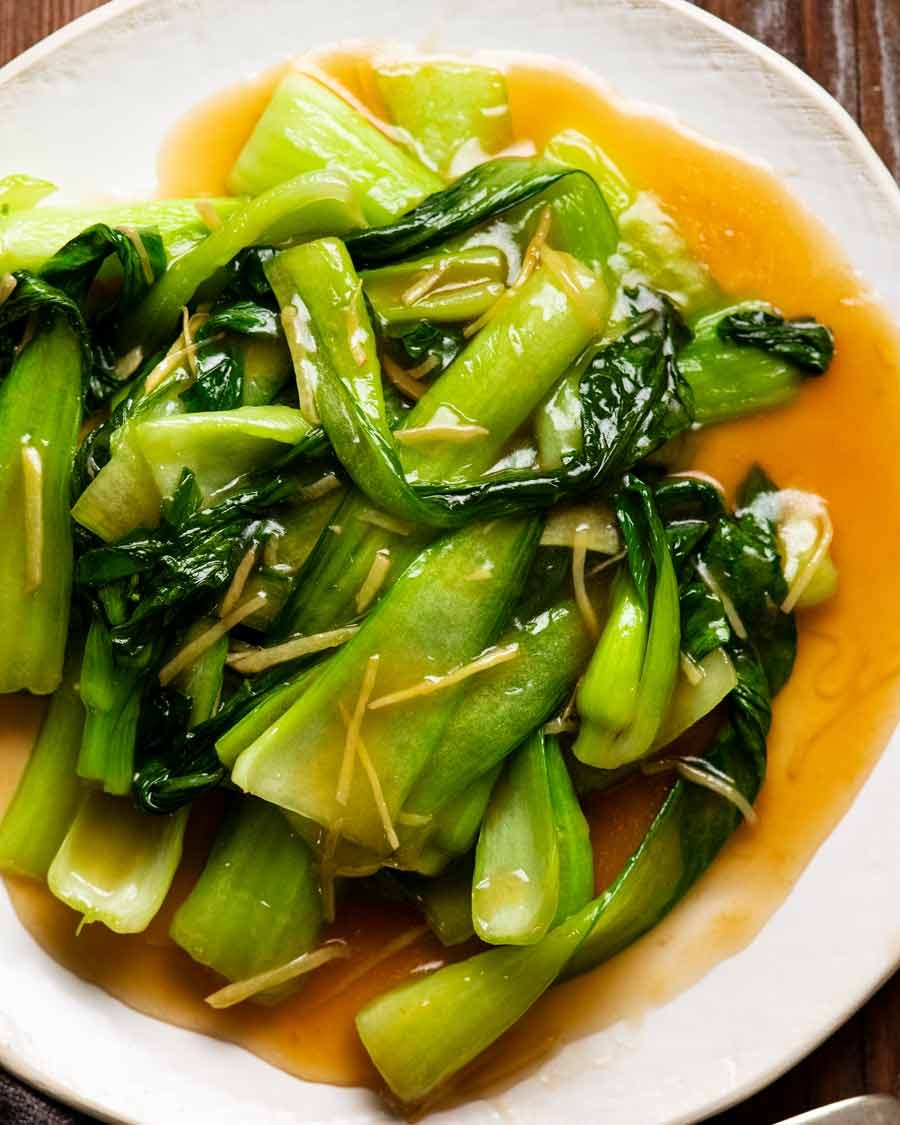

What you need to make Bok Choy in Ginger Sauce
Here’s what you need to make this bok choy recipe.
Bok Choy (or other Asian greens!)
I’m using baby bok choy for today’s recipe but you can use almost all leafy Asian greens such as pak choy and choy sum.

Size – I like to use small(ish) bok choy if I can find it, usually labelled “baby bok choy”, because it is more tender and sweet. I classify them “baby” up to around 17cm/7″ long. The other side benefit is that you can cook the leaves whole without separating the stem from the leafy part which looks nice.
Much longer than this and you end up in a spaghetti-type situation (I see hot ginger sauce being slapped around your mouth!) unless you cut the leafy part from the stem.
Other Asian greens
The cooking method in this recipe works great for pretty much any Asian greens. You just need to tweak the steaming time to suit the one you’re using. Here are some other common Asian greens that are ideal to use for this recipe – pak choy (full size and baby!) and choy sum.
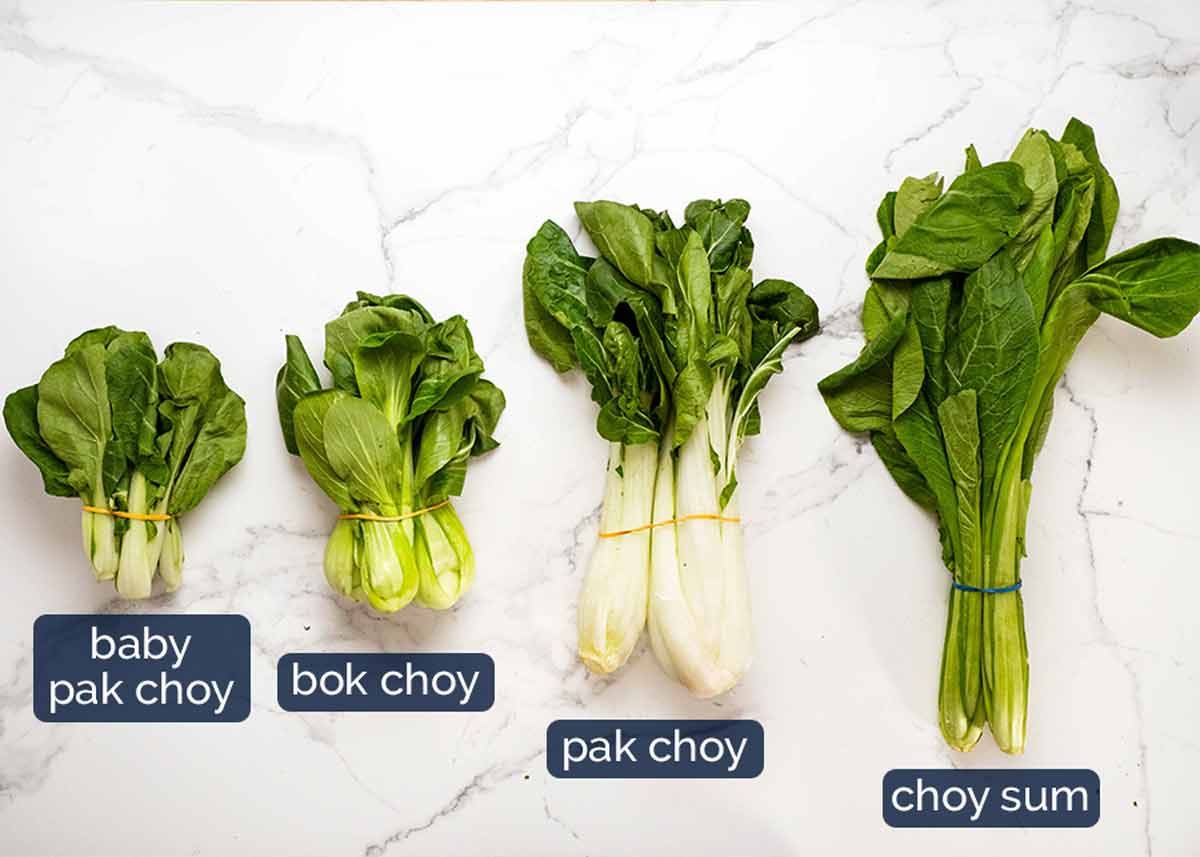
And here’s how to cut each of these types of Asian greens for this recipe. For the longer ones, just cut into pieces as long or short as you want. For smaller ones, keep the leaves whole!
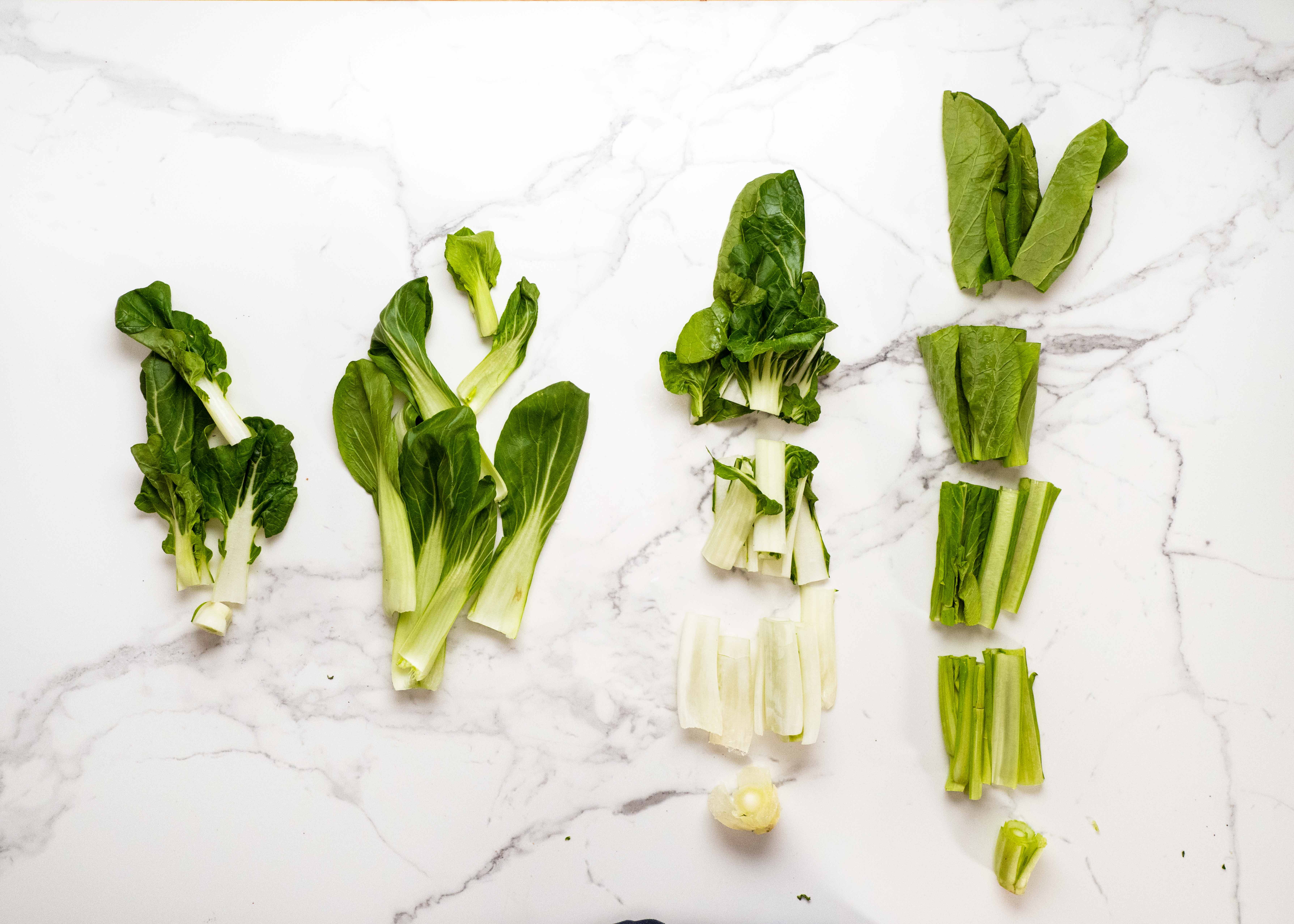
Gai lan, also known as Chinese broccoli, will also work but because the stem is a little firmer (like ordinary broccoli texture), it will take a little longer to steam-cook. Though, if Gai Lan is what you have, my favourite way to cook it is with Oyster Sauce, yum cha style – stacked and doused with sauce! Recipe here.
Sauce
The sauce is a classic Chinese stir fry sauce that is nice and shiny. It’s fairly light in colour compared to other stir fry sauces which is common at Chinese restaurants. It suits vegetable dishes – we don’t want to weigh down leafy greens with overly salty, intensely flavoured sauces.
But, let me be clear, this sauce is definitely not bland!! It’s an excellent, tasty rice-soaking sauce!
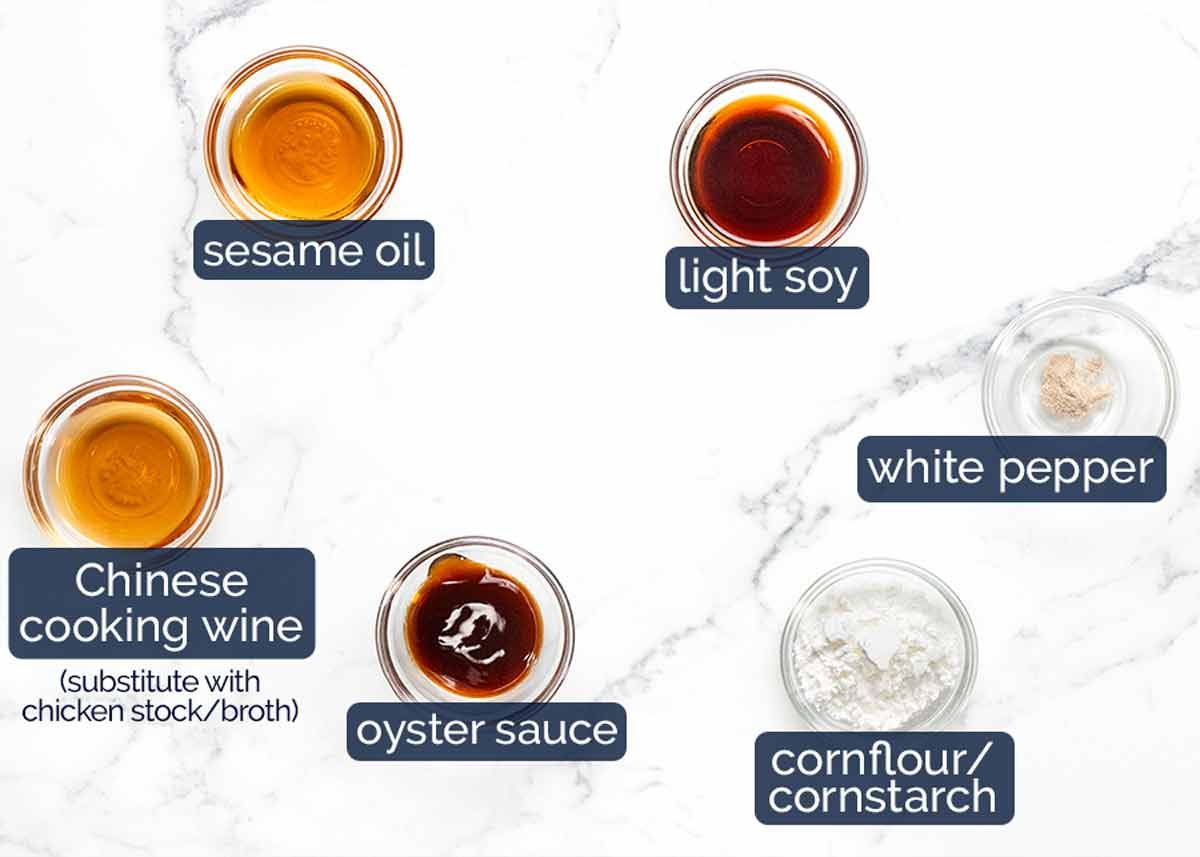
-
Oyster sauce – A very common Asian sauce found in the Asian aisle of grocery stores that is used liberally in Chinese, Thai and other Asian cooking. Sweet and savoury packed into one magical bottle, it’s key to this otherwise simple sauce not being bland and boring. Substitute with vegetarian oyster sauce (fairly commonly found these days) or hoisin sauce (you’ll get a hint of Chinese five spice flavour which is lovely too!)
-
Chinese cooking wine (“Shaoxing wine”) is an essential ingredient for making truly “restaurant standard” Asian sauces, adds depth of flavour. More information on it here. Substitute with Mirin, cooking sake or dry sherry. Non alcoholic substitutes – swap both the cooking wine AND water with low sodium chicken broth/stock.
-
Sesame oil (toasted) – Use toasted sesame oil which is brown and has more flavour than untoasted (which is yellow). Default sesame oil sold in Australia is toasted, untoasted is harder to find.
-
Soy sauce – Use either light or all purpose soy sauce. But not dark soy sauce – flavour is too strong and the colour is too intense! More on which soy sauce to use when here.
-
Cornflour / cornstarch – Thickens the stir fry sauce and also makes it shiny! Flour, on the other hand, doesn’t make sauces shiny. Food trivia for the day!
-
White pepper is the pepper of choice in most Chinese stir fry sauces as it keeps the sauce free of (unsightly!😂) black pepper speckles. But I promise switching a pinch of white pepper for black pepper will not ruin your dish!!
How to cook Bok Choy
Bok choy cooks so quickly it can be pan roasted, steamed or boiled. But my favourite way is to combine both pan-roasting and steaming. You get the lovely sautéed gingery oil coating the bok choy before steaming it in just 45 seconds in the pan. The sauce is poured in at the end and literally takes 30 seconds to thicken!

-
Sauce – Mix the cornflour/cornstarch with everything except the water until lump free, then mix in the water. Why? Because it’s easier to dissolve cornflour in less liquid. If there’s too much liquid, you end up with pesky cornflour lumps.
-
Sauté ginger in the oil for a minute to soften and also to flavour the oil. The ginger won’t cook much further once everything else is added.
TIP: Start the ginger in a cold pan to extend the oil-infusion time!

-
Toss bok choy in the pan for about 15 seconds to coat it in the gingery oil. I recommend using 2 spatulas, one a rubber spatula so you can scoop up the little bits of ginger.
-
Water – Then pour over 1/4 cup of water. This will create the steam to cook the bok choy.

-
45 second steam – Place the lid on then steam for just 45 seconds until the stem is partially cooked. Bok choy cooks really, really quickly! And we still have the sauce to go so we don’t want it to be fully soft at this stage.
Doneness – The stem should still have a soft crunch to it, but not be crisp like when raw. If it’s soft all the way through, it turns into mush. Not pleasant!
-
Sauce – Give the sauce a quick stir to mix in any cornflour settled on the bottom. Then pour it over the bok choy and toss for just 30 seconds or until it changes from murky to a clear glossy sauce that thickens slightly and coats the bok choy.
Thickness adjustment – If the sauce evaporates too quickly and gets too thick, just add a splash of water to loosen it up! This can happen if there’s too much heat in the pan or if your vegetables are a bit past their prime so don’t release much water when steaming.
And that’s it! How quick was that? 🙂 Just transfer the bok choy and every drop of that delicious sauce onto a serving plate then serve!


Serving
The obvious role for this plate of tasty vegetable goodness is as a side dish. But I exaggerate not when I say that I’ll happily have this as a meal, just by itself. Proof above. Look at that ginger-sauce-rice-soaking situation!!! Try telling me that’s not meal worthy! – Nagi x
Watch how to make it
Hungry for more? Subscribe to my newsletter and follow along on Facebook, Pinterest and Instagram for all of the latest updates.
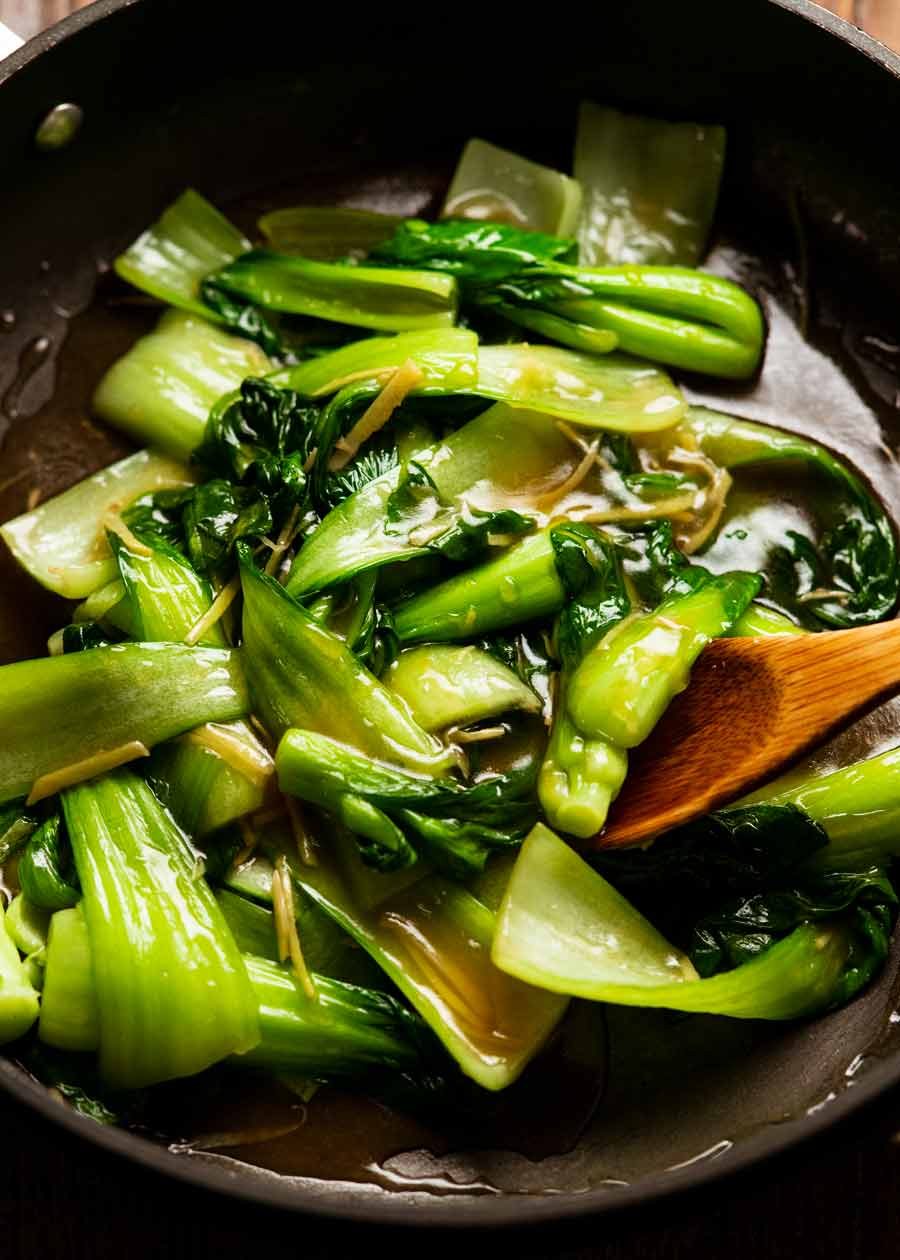
Bok Choy in Ginger Sauce
#wprm-recipe-rating-0 .wprm-rating-star.wprm-rating-star-full svg * { fill: #343434; }#wprm-recipe-rating-0 .wprm-rating-star.wprm-rating-star-33 svg * { fill: url(#wprm-recipe-rating-0-33); }#wprm-recipe-rating-0 .wprm-rating-star.wprm-rating-star-50 svg * { fill: url(#wprm-recipe-rating-0-50); }#wprm-recipe-rating-0 .wprm-rating-star.wprm-rating-star-66 svg * { fill: url(#wprm-recipe-rating-0-66); }linearGradient#wprm-recipe-rating-0-33 stop { stop-color: #343434; }linearGradient#wprm-recipe-rating-0-50 stop { stop-color: #343434; }linearGradient#wprm-recipe-rating-0-66 stop { stop-color: #343434; }
Ingredients
- 6small bok choys, up to ~17cm/7″ long, or other Asian greens (Note 1 + photos in post)
- 2tbspvegetable oil
- 1/4cupginger, finely julienned (or 1 tbsp garlic)
- 1/4cupwater
Sauce (Note 5 for Charlie shortcut!):
- 3tspcornflour/cornstarch
- 1 1/2tsplight soy sauce, or all-purpose soy (Note 2)
- 1tspoyster sauce(sub vegetarian oyster sauce)
- 2tspChinese cooking wine(Note 3)
- 1tspsesame oil, toasted
- 1/4cupwater
- 1/4tspcooking salt
- Pinchwhite pepper
Instructions
-
Cutting – Trim the base of the bok choy then separate all the leaves. Leave the delicate baby bok choy in the centre intact, it’s precious! Cut giant stems in half lengthwise so they are all roughly the same size. Rinse in colander, shake off excess water (don’t need to dry fully).
-
Sauce – Stir Sauce ingredients except water in a jug until cornflour is dissolved. (Easier to make lump free with less liquid). Then stir in water.
-
Gingery oil – Put the ginger and oil in a large non-stick pan. Turn onto medium heat. Once the ginger starts sizzling, sauté for 1 minute until it turns light golden and is a bit floppy. Add bok choy then use 2 spatulas to toss the ginger for around 15 seconds to coat.
-
Steam – Turn heat up to medium, pour water over. Cover with lid and steam for just 45 seconds.
-
Sauce – Remove lid (bok choy will still be a bit underdone), pour in sauce, toss for 30 seconds until sauce changes from murky to clear, and thickens. Bok choy should be just floppy but still soft crunch, not mushy. If your sauce gets too thick (Note 4), add a tiny splash of water and mix.
-
Serve – Pour the bok choy and all the sauce onto a serving plate, then eat!
Recipe Notes:
Nutrition Information:
Life of Dozer
Before…..
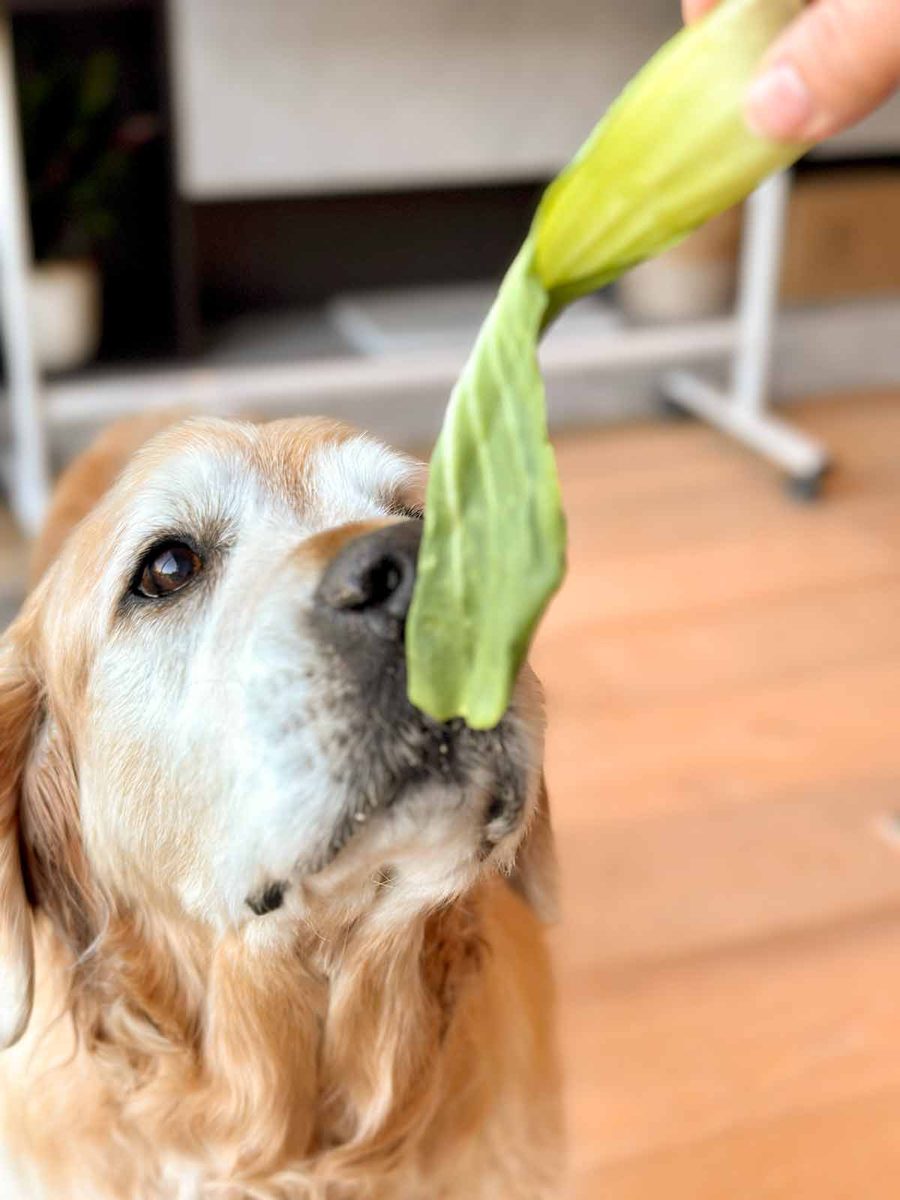
….and after he realised what it was:
